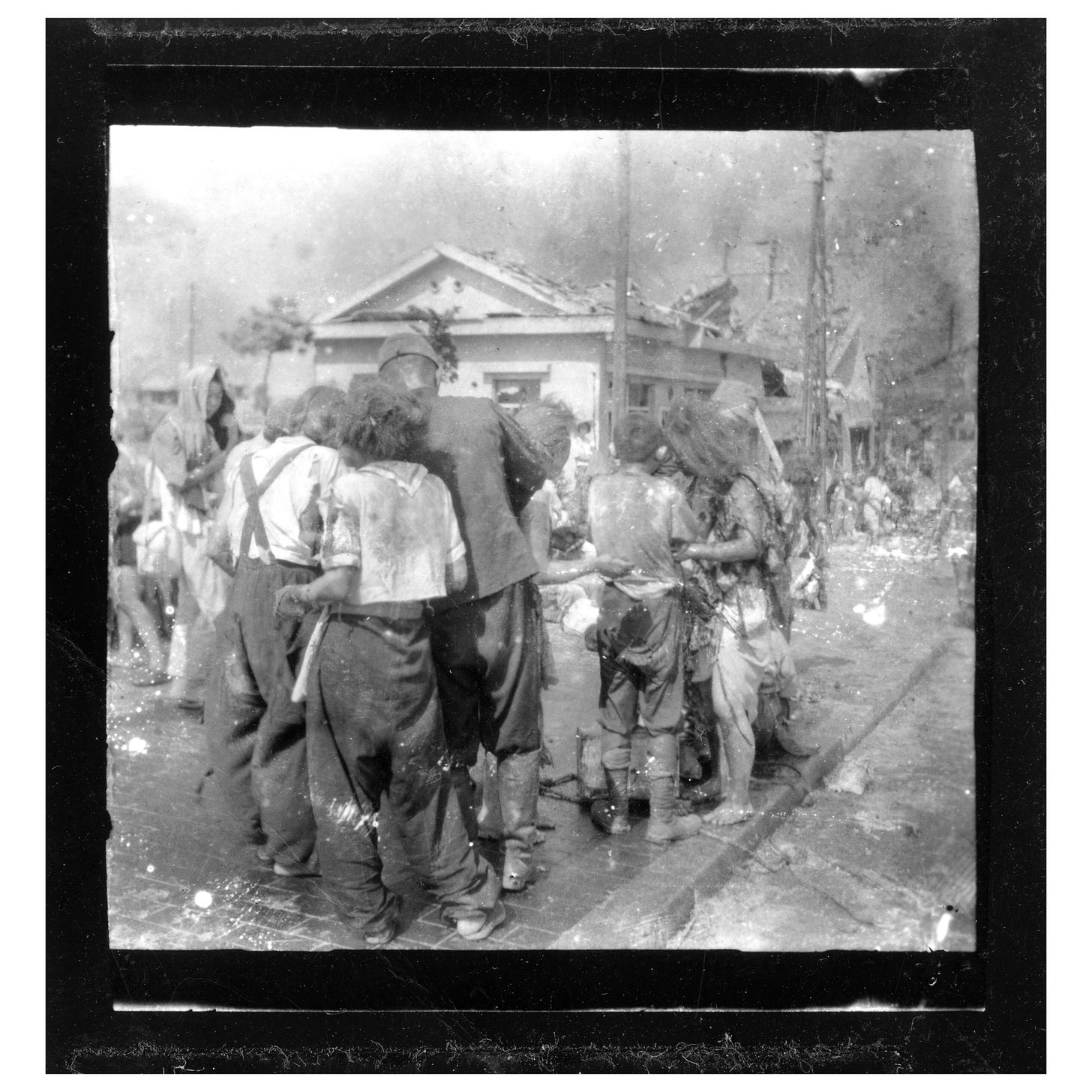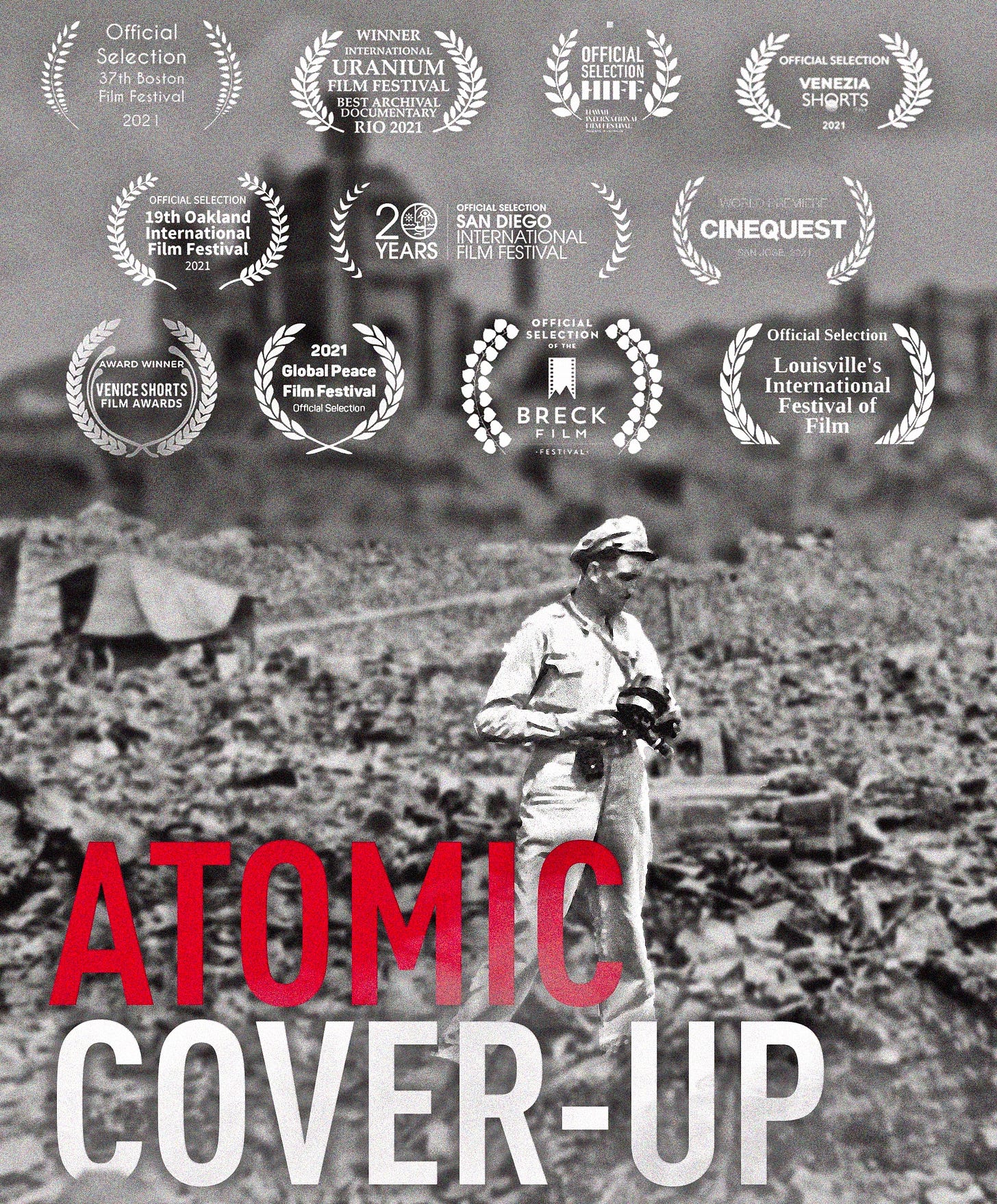Reprinted with permission from Greg Mitchell’s newsletter Oppenheimer: From Hiroshima to Hollywood.

It’s taken nearly eight decades since J. Robert Oppenheimer’s “deadly toy” (as per Sting) was sent on its first mission, but the Japanese government decided Tuesday to recommend a collection of photos and videos depicting the devastation in Hiroshima after the August 1945 atomic bombing to a UNESCO documentary heritage program for 2025, the 80th anniversary of the U.S. attack.
This covers the same general period and scenes of physical and human devastation revealed in my recent award-winning film, Atomic Cover-up, now up for all to see (27-minute version) for free at PBS.org and all PBS apps – see below. It comes just days after the hit movie Oppenheimer, which omitted all scenes of victims and carnage in Hiroshima, became available to home viewers in the U.S.
Kyodo News reports: If the new Japanese offer is accepted, it will mark the first time documents related to the atomic bomb have been added to the U.N. Educational, Scientific and Cultural Organization’s “Memory of the World” Register.
“The collection of 1,532 photos and two videos were taken between Aug. 6, 1945, when the bomb was dropped, and the end of that year. They depict the mushroom cloud, wounded people and scenes of destruction near the hypocenter and were taken by citizens and photographers from newspapers and Domei News Agency, the predecessor to Kyodo News and Jiji Press, as well as the then Imperial Japanese Army.
“The city of Hiroshima, along with the two broadcasters and newspapers Chugoku Shimbun, Asahi Shimbun and Mainichi Shimbun, had sought the recommendation for UNESCO listing.”
“Photographer Seiso Yamada, 95, the only surviving former Chugoku Shimbun journalist who captured images at the time, expressed the hope that “people would feel the horror (of the atomic bomb) when looking at the photos.”
If interested: More background and reviews by notables at my film’s site. The “feature” version of the film (52 minutes) is available for free via Kanopy if you have any sort of library card. It can also be purchased for libraries, classrooms and for community screenings. My companion book, also titled Atomic Cover-up, can be ordered here for as low as $3.99.

Thanks for reading Oppenheimer and the Legacy of His Bomb ! Subscribe for free to receive new posts and support my work.
Greg Mitchell is the author of a dozen books, including “Hiroshima in America,” and the recent award-winning The Beginning or the End: How Hollywood – and America – Learned to Stop Worrying and Love the Bomb, and has directed three documentary films since 2021, including two for PBS (plus award-winning “Atomic Cover-up”). He has written widely about the atomic bomb and atomic bombings, and their aftermath, for over forty years. He writes often at Oppenheimer: From Hiroshima to Hollywood.




The USA and the rest of the world should be more aware of the effects of the blasts at Hiroshima and Nagasaki. All the wars before and after WWII that ended, ended without the use of nuclear weapons.
The US dropped the bombs after Japan surrendered and not before despite what we are taught in history classes. Democracies as well as authoritarian nations commit war crimes.
For all intensive purposes, Japan had surrendered. The sticking point was Japan retaining Hirohito. The bombs were dropped. Japan signed the instrument of surrender. Japan kept Hirohito. G-d Bless America, huh?
A major reason the Japanese were bombed was to send a message to the Soviet Union to some extent, and the Japanese surrendered partially because the Soviets had declared war on them. It was over. There was no need for an atomic bomb. They were discussing return anyway.